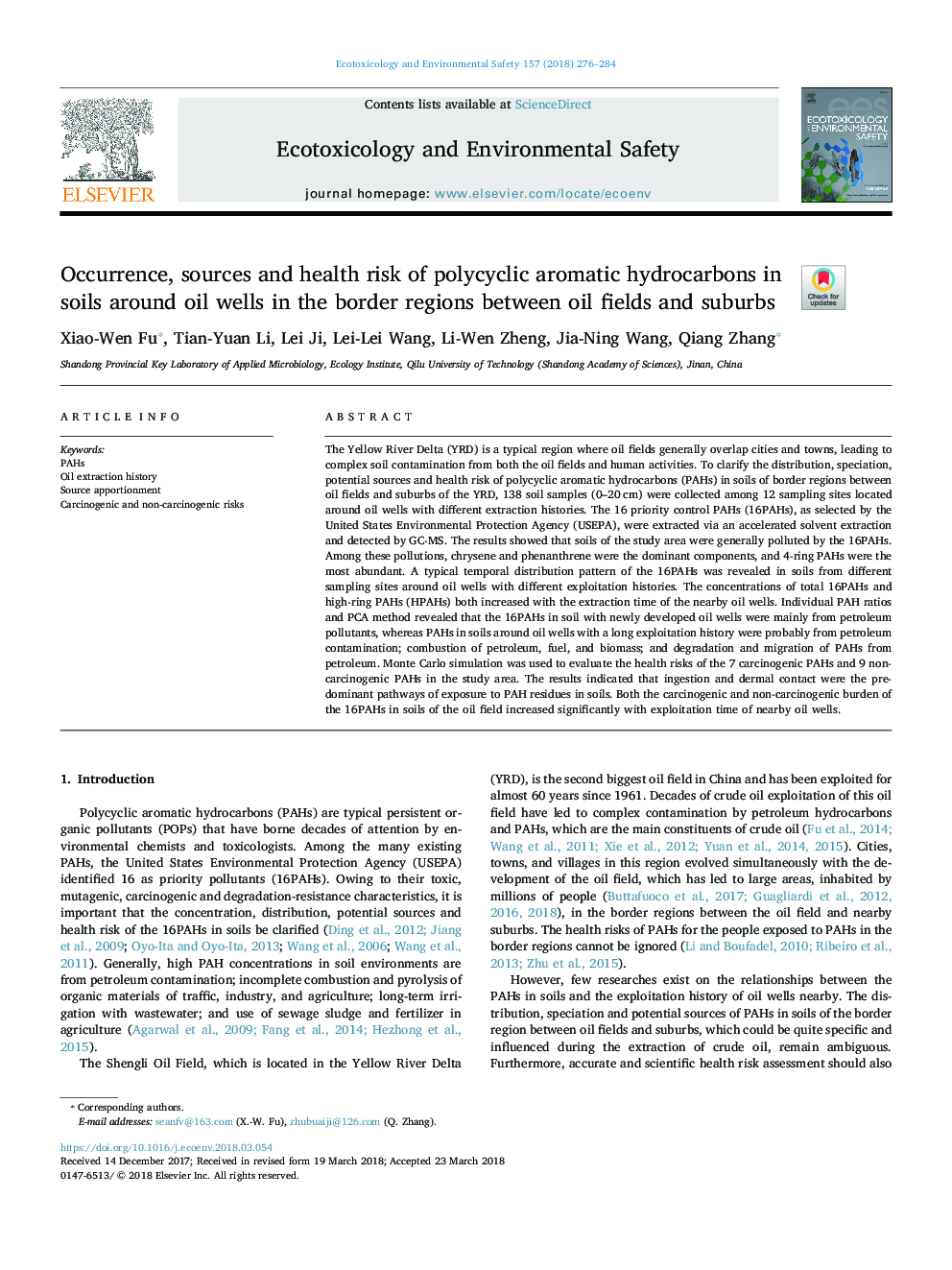| کد مقاله | کد نشریه | سال انتشار | مقاله انگلیسی | نسخه تمام متن |
|---|---|---|---|---|
| 8853940 | 1618907 | 2018 | 9 صفحه PDF | دانلود رایگان |
عنوان انگلیسی مقاله ISI
Occurrence, sources and health risk of polycyclic aromatic hydrocarbons in soils around oil wells in the border regions between oil fields and suburbs
ترجمه فارسی عنوان
وقوع، منابع و خطر سلامت هیدروکربن های آروماتیک چند حلقه ای در خاک های اطراف چاه های نفتی در مناطق مرزی بین میدان های نفتی و حومه
دانلود مقاله + سفارش ترجمه
دانلود مقاله ISI انگلیسی
رایگان برای ایرانیان
موضوعات مرتبط
علوم زیستی و بیوفناوری
علوم محیط زیست
شیمی زیست محیطی
چکیده انگلیسی
The Yellow River Delta (YRD) is a typical region where oil fields generally overlap cities and towns, leading to complex soil contamination from both the oil fields and human activities. To clarify the distribution, speciation, potential sources and health risk of polycyclic aromatic hydrocarbons (PAHs) in soils of border regions between oil fields and suburbs of the YRD, 138 soil samples (0-20â¯cm) were collected among 12 sampling sites located around oil wells with different extraction histories. The 16 priority control PAHs (16PAHs), as selected by the United States Environmental Protection Agency (USEPA), were extracted via an accelerated solvent extraction and detected by GC-MS. The results showed that soils of the study area were generally polluted by the 16PAHs. Among these pollutions, chrysene and phenanthrene were the dominant components, and 4-ring PAHs were the most abundant. A typical temporal distribution pattern of the 16PAHs was revealed in soils from different sampling sites around oil wells with different exploitation histories. The concentrations of total 16PAHs and high-ring PAHs (HPAHs) both increased with the extraction time of the nearby oil wells. Individual PAH ratios and PCA method revealed that the 16PAHs in soil with newly developed oil wells were mainly from petroleum pollutants, whereas PAHs in soils around oil wells with a long exploitation history were probably from petroleum contamination; combustion of petroleum, fuel, and biomass; and degradation and migration of PAHs from petroleum. Monte Carlo simulation was used to evaluate the health risks of the 7 carcinogenic PAHs and 9 non-carcinogenic PAHs in the study area. The results indicated that ingestion and dermal contact were the predominant pathways of exposure to PAH residues in soils. Both the carcinogenic and non-carcinogenic burden of the 16PAHs in soils of the oil field increased significantly with exploitation time of nearby oil wells.
ناشر
Database: Elsevier - ScienceDirect (ساینس دایرکت)
Journal: Ecotoxicology and Environmental Safety - Volume 157, 15 August 2018, Pages 276-284
Journal: Ecotoxicology and Environmental Safety - Volume 157, 15 August 2018, Pages 276-284
نویسندگان
Xiao-Wen Fu, Tian-Yuan Li, Lei Ji, Lei-Lei Wang, Li-Wen Zheng, Jia-Ning Wang, Qiang Zhang,
